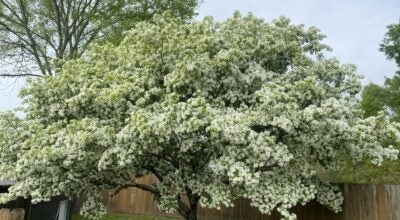The nutsedges are a major weed species
Published 12:21 am Wednesday, July 31, 2013
The nutsedges that are commonly encountered in this area are purple nutsedge (Cyperus rotundus) and yellow nutsedge (Cyperus esculentus). These nutsedges have many common names including nutgrass, cocograss, and coco weed. Many people refer to nutsedge as being a grass because of its grass like appearance. However, nutsedge from a taxonomy perspective is not a true grass. The nutsedge belongs to the Cyperaceae family where the true grasses are in the Poaceae family. One major characteristic that differentiates the sedges from grasses is the cross section of the stem. The cross section of the stem in the sedges is triangular, or in other words, the stem has three flat sides. In grasses, the cross section of the stem is round.
The nutsedges produce underground tubers that serve as energy reserves for the plant, which is one of the reasons for the persistent nature of the nutsedges. Purple nutsedge and yellow nutsedge are perennial plants that persist from year to year. Purple nutsedge has deep green dagger shaped leaves and underground tubers that are connected by chains of rhizomes (underground stems). Yellow nutsedge produces pale green foliage that is sharply tapered and underground tubers that do not form chains of rhizomes. The inflorescence or seed head of the purple nutsedge is purple to reddish brown where the yellow nutsedge inflorescence is yellowish brown or straw colored.
A weed is defined as a plant growing where it is not wanted. The nutsedges definitely fit that description in most cases. Weeds, such as nutsedges, compete with crops for sunlight, nutrients, and water and are aesthetically disruptive in landscape situations. Nutsedges are a nuisance in many different areas including turf areas, ornamental beds, pastures, vegetable gardens, and agronomic row crop production. Nutsedges are aggressive and persistent due to the establishment of rhizomes and tubers. Once established, nutsedges can be difficult to control.
An integrated approach is required to effectively control the nutsedges. From a cultural perspective, maintaining the proper soil moisture is critical in preventing the establishment of sedges. Sedges are tolerant of saturated soils where other plants such as turfgrasses are not as tolerant of saturated soil conditions. This allows the nutsedges to become established quickly and overtake the area. In addition, the nutsedges can tolerate a wide range of soil moistures including drought situations. The ability to identify the different nutsedges is critical because they can be introduced in soil amendments and in containerized plants. After the nutsedge becomes established, chemical control will be needed to obtain effective control. Herbicides containing the active ingredient halosulfuron-methyl are effective in controlling purple and yellow nutsedge. Halosulfuron-methyl has preemergence and postemergence activity on purple and yellow nutsedge. Several brand names are available with the halosulfuron-methyl active ingredient, but the proper label must be selected depending on the situation and crop being grown. The labels are specific on the areas or crops in which the product can be used. Remember to always read and follow the label when using any pesticide product.
This article was compiled by Scotty May, Assistant Extension Agent (ANR) for Washington Parish. For more information concerning this article or related topics, please contact the Washington Parish Extension Office at 985-839-7855.






